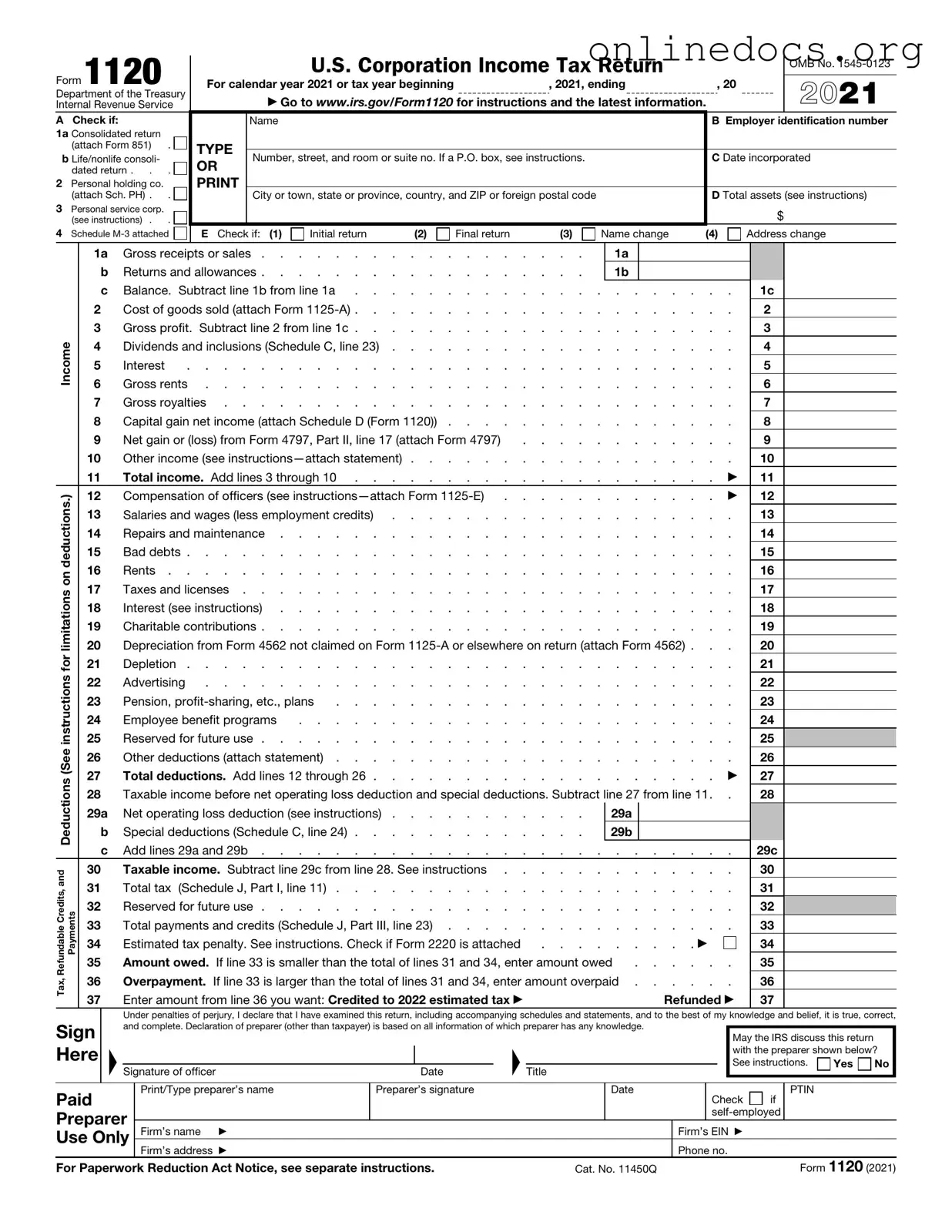The IRS Form 1065 is similar to Form 1120 in that both are used by businesses to report their income and expenses to the Internal Revenue Service. However, while Form 1120 is specifically for corporations, Form 1065 is intended for partnerships. Partnerships do not pay income tax at the entity level; instead, the income passes through to the individual partners, who report it on their personal tax returns. Both forms require detailed financial information, including revenue, deductions, and credits, but they differ in how the tax liability is ultimately calculated and reported.
Another document that shares similarities with Form 1120 is the IRS Form 1040, which is the individual income tax return. While Form 1120 is used by corporations, Form 1040 is utilized by individuals to report their personal income, deductions, and tax liability. Both forms require taxpayers to detail their sources of income and applicable deductions, but the structure and reporting requirements differ significantly. Form 1040 focuses on personal income tax, while Form 1120 addresses corporate taxation.
Form 990 is also comparable to Form 1120, but it serves a different purpose. Nonprofit organizations use Form 990 to report their financial activities to the IRS. Like Form 1120, it requires detailed financial information, including revenue and expenses, but it is specifically designed for tax-exempt organizations. Both forms aim to provide transparency and accountability regarding financial operations, yet they cater to different types of entities and have distinct regulatory requirements.
When managing transactions, especially in real estate or vehicle sales, a crucial document to consider is the New York Bill of Sale. This form provides a comprehensive record of the transfer of ownership, detailing the seller, the buyer, and the specifics of the item being sold. For those seeking a reliable template or additional information, resources like legalformspdf.com can be invaluable in ensuring that all necessary legal aspects are properly addressed.
Lastly, Form 941, the Employer’s Quarterly Federal Tax Return, is related to Form 1120 in that both forms involve reporting to the IRS, but they serve different functions. Form 941 is used by employers to report payroll taxes withheld from employees’ paychecks and the employer’s share of Social Security and Medicare taxes. While Form 1120 focuses on corporate income and expenses, Form 941 is concerned with employment taxes. Both forms require accurate financial reporting and compliance with IRS regulations, but they apply to different aspects of taxation.
